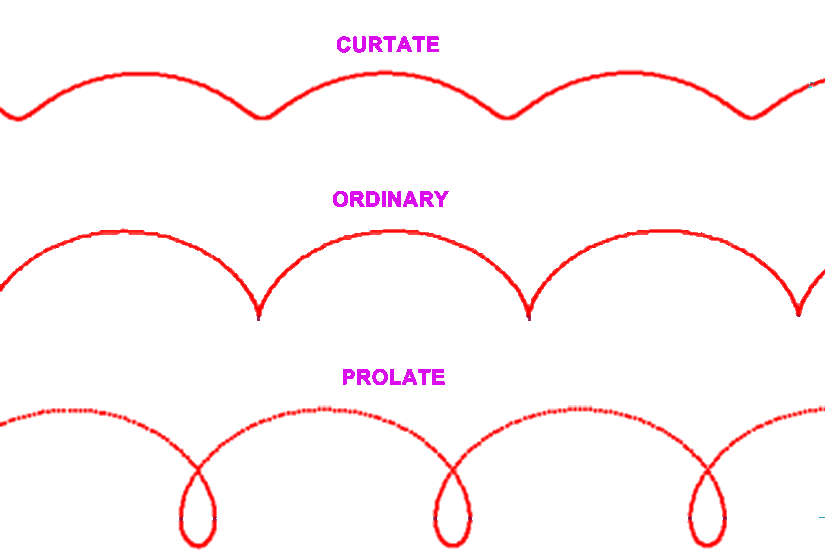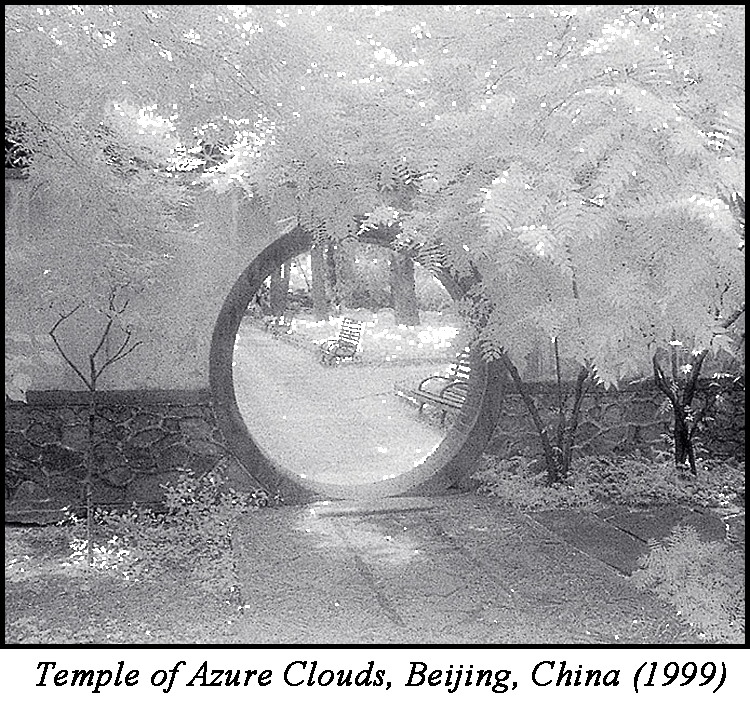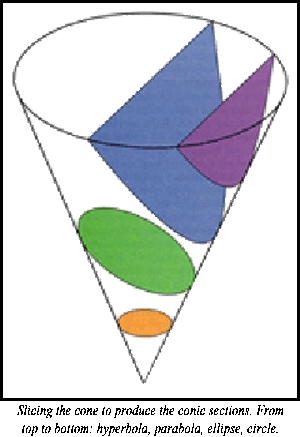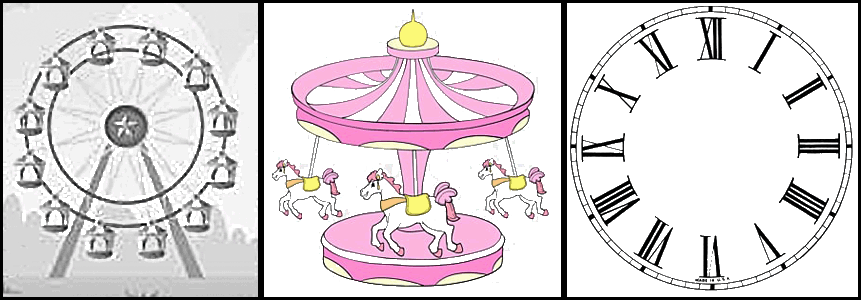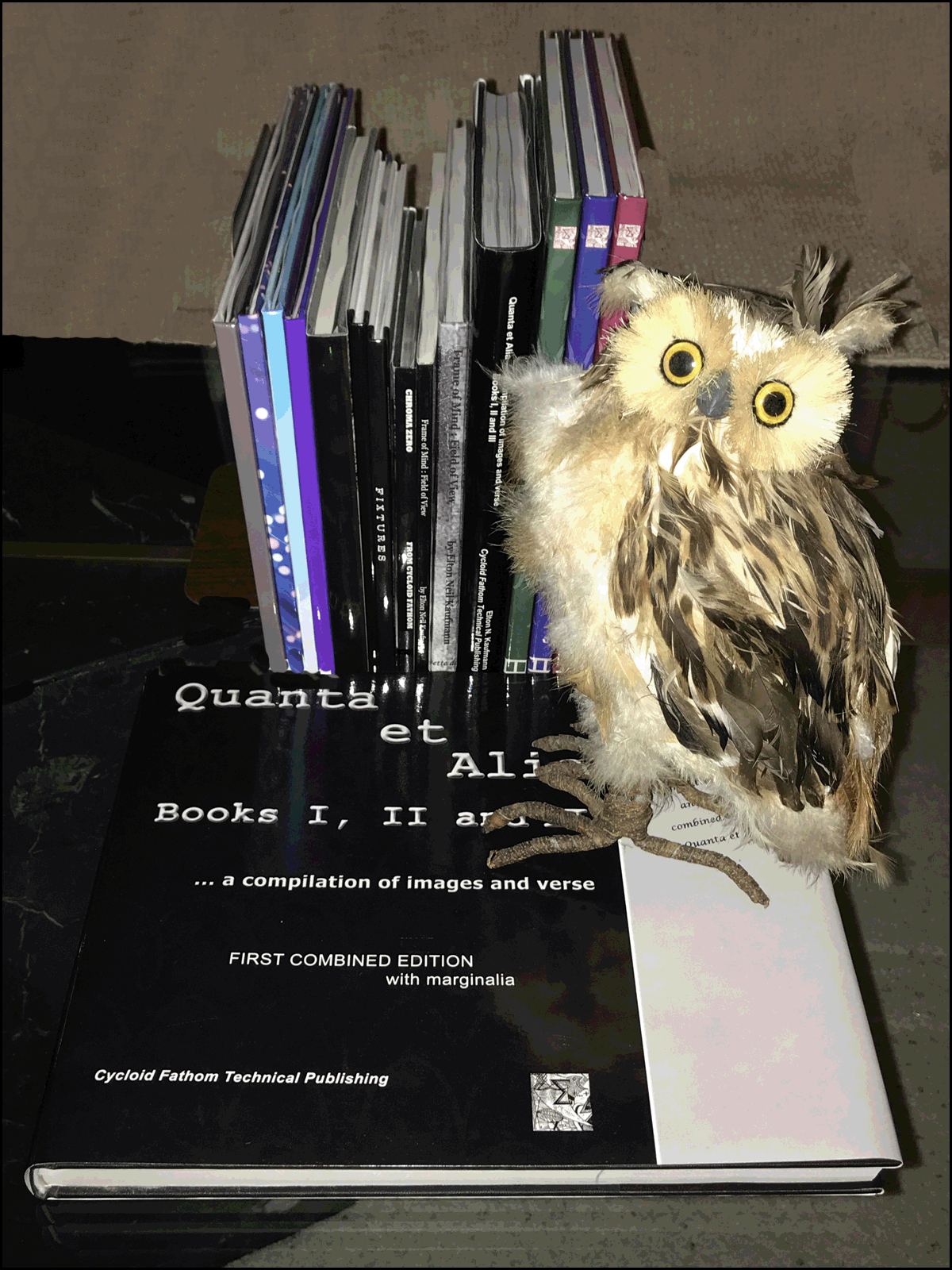Today’s rumination will meander around in the world of words and special shapes.
A circle could be mistaken for the letter ‘O’ or for the number ‘0’ even though some fonts make the zero look more like an oval. A true circle deserves a special place in the galaxy of geometric shapes. All closed figures let us distinguish between the inside and the outside as two regions of the plane [1], but there is something about the purity of the circle that mesmerizes. Its boundary just travels smoothly around a full 360 degrees without a wiggle or a bump. The line of a figure that curves nicely around anything need not be closed to have a tangent. The tangent is just another line associated with another geometric shape that touches our first one, a very close encounter. But I like to see the ideal situation when the second shape is either a straight line or another circle as shown below.
Geometry is fun. For me, these circles ran only second behind my favorite, the triangle, in my early introduction to plane geometry. In the middle of the figure, you see a straight line tangent to a circle and at the left and right you see the two ways two circles can be tangent to each other. We could stop here and just meditate on the way these shapes look back at us. It’s a bit of an eye test when you stare at these for a while.
But naturally, there is more
If we were to consult Mr. Miyagi, [2] or Yoda, [3] or the Vulcan Master who taught a young Tuvok to suppress his emotions, [4] or Eywa of the Na'vi, [5] we would learn that there is much more implied by these simple shapes than meets the eye. First, observe the line that just slides by the circle. I would not call the contact a glancing blow because the line stays on the straight and narrow without deflection. That is just how we all ought to travel without being diverted from the central purpose of our lives. It reflects honesty, integrity, sticktoitiveness, and often a strong faith in guiding principles. Those all sound like positives to me. Regardless of what or who lives inside that circle just passed, our line remains unaffected.
All circles, unlike a line, do have those insides and outsides. The two pairs of tangent circles on the right and left in the figure differ greatly. If the large circle is inhabited by an exclusive club, we see that those in the small circle are excluded on the right but accepted on the left. Substitute “club” with the name of any in-group you choose. Does that not emulate how our society functions, especially concerning exclusivity in interpersonal relations? [6]
A retreat to physics
As a point of personal privilege, I must mention the more exotic possibility of tunneling. We don’t know how steep the walls of those circles are. But they are barriers that are supposed to prevent the inhabitants of one side from scaling the heights and entering the other. In the quantum world, such barriers are penetrable because of a phenomenon called tunneling. Why? In that quantum world, we never know exactly where anyone is at any moment. We only have spread out probabilities of where you or I might be with no precision. These probabilities are fuzzy and overlap wide regions around where we are likely to be. Their tails even overlap those barriers. Thus, there is a chance that we have tunneled through rather than climbed over the barrier and entered the forbidden side of a circle without spending any extra energy at all.
That kind of surreptitious entry can happen in our macroworld but usually requires much energy, planning, and bravery. I expect a Jedi master could pull it off.
If the smaller circle that we see tangent within the larger circle was admitted through a coming together of hopes and minds, then that’s great. However, if it was captured through a sneak attack, we hope that a remaining positive is that its own boundaries have not faded nor been breached and its unique internal culture can be preserved despite the larger community in which it now survives.
My favorites
Yes, triangles were my top favorite for a while. However later, triangles slipped to third place below the second-place circle once I saw a bicycle wheel’s circle sporting a glowing flashlight bulb that traced a pattern as it passed me by one early evening at dusk. The wheel was a circle, but the bulb did not know that. It traced a wavy line that l later learned was a cycloid, an ordinary cycloid. The three simplest cycloids are the wavey curtate, the spikey or cuspy* ordinary, and the loopy prolate. [7] These are quite beautiful to the eye of this beholder; birthed by the circle but not circles themselves.
Colloquial tangents
I imagine this is the first thing that occurred to you upon seeing this post’s title. The cliché going off on a tangent is quite common because it describes a common supposedly bad habit that slows jobs, dilutes lectures, and wastes time. Somehow going off on a tangent is a negative whereas thinking out of the box is a positive. It seems to me that one can ride a tangent out of an unimaginative box. A warning: if you plan on leaving the box, it would be best if some resources and even a few equally rambunctious colleagues were to ride the tangent with you.
On the other hand, if the tangent is exiting a train of thought, that's a problem. That could just be due to a disorganized mind or wanting to blurt out a thought now before forgetting it by the end of the on-topic speech.
The colloquial tangent need not be straight. lt may curl back bringing new insights and reconnecting into the box. Also, some tangents add color and interest to a boring lecture. Tension breakers can be tangents. A joke or witticism may appear to be a tangent when it’s merely an elastic departure that springs back to the main topic during the laughter. One hopes there is laughter. Finally, what appears to be a tangent may later be anointed as a relevant excursion capturing an aspect of the main theme not realized earlier.
Let’s return to our circles
Here’s a portal that respects the circle. Built in the 14th century during the Yuan dynasty (1271–1368), the Temple of Azure Clouds chose the circle rather than the arch in a few places, even though the latter is architecturally stronger. This one has lasted a long time, however. Let’s think about 3.14159265... at length, a number not to be trifled with. It can be more restful than counting sheep when fighting insomnia. The dots (ellipses) following the five means that number as written only approximates the ratio of the circumference of a circle to its diameter. The full number, all of whose digits cannot be written, is commonly referred to as Pi or cited in formulae with the Greek π. There is something almost seditious for our circle to make that ratio an irrational number. We rely on rationality throughout our lives and are expected to behave accordingly, but apparently, our circle is exempt. Do you think that the monks of the Azure Temple knew about Pi when they knew how wide a portal they wanted, the diameter, but had to measure the correct cumulative length of their curved stones?
The Cone
Circles don’t just arise out of thin air. We start with a cone. [8] We slice the cone at some angle to its axis. The face of the cut-off section will have a shape called a conic section, of course. In general, those shapes are parabolas, hyperbolas, or ellipses of varying eccentricity or elongation depending on the angle of the slicing. I am tempted to note that eccentricity is also a human characteristic engendering charismatic charm and creativity or quirkiness and possibly a medical disorder. Fortunately, our circle is a very special conic section. It is obtained by slicing the cone at right angles to its axis. It has no eccentricity at all, good or bad. We must assume that it gets its charm from another source.
The Wheels
Above, I did not give sufficient recognition to that bicycle wheel that led me to recognize the cycloid. Since its invention [9], the wheel has certainly evolved along with the rest of our tools. Spokes were added to wagon wheels and then the rubber met the roads to protect their surfaces. So many other examples of where circular objects like the wheel have defined our society.
From the early spinning wheel to the electric fan to the turbine engine to the hula hoop to the merry-go-round to the Ferris wheel, and to the roulette wheel: what would we do without them? The hands of the circular clock face coupled with the circular face of the magnetic compass helped us navigate and find our true north until the digital world displaced them both. Still, when you stop to think about it, which I obviously have, every single one of us just by riding on the surface of the Earth is tracing out up to a nearly 13000-kilometer diameter circle if we remain perfectly still for a full 24 hours. The maximum diameter is reserved for the residents of Pontianak, Indonesia.
The lexicon
The word ‘circle’ is used in various insightful ways. When we wheel around quickly to encounter something behind us, we must be tracing out a circle. Why else would wheeling around be a better description than “turning” for describing that dizzying whirl?
A circle of friends is a nice way to encompass close ones. A circle of confusion describes how inaccurate our GPS location indicators may be as well as how accurately our bombs can target their targets. Our circular arguments have a similar effect on productivity as does going off on a tangent. And have you noticed that the waters in our kitchen sinks circle the drain as they leave us, clockwise or counterclockwise depending on our hemisphere?
Now to end I want to strike a chord for the chord. The first is another straight line, but unlike the tangent, it does not bypass but cuts right through our circle connecting on the inside two points on the circumference. The second is the melodious sound made by plucking a few well-tuned cords of a musical string instrument. After all the circle has done for us, it is prepared to play music for us too.
*Cuspy, as in the cosmological use for non-smooth scalar potentials on the production of gravitational waves during oscillon formation after inflation, 1000 seconds after the Big Bang, not as in its use for a well-designed and user-friendly computer program.
[1] In three dimensions, a sphere is the perfect object, but that is beyond the scope of our post today. We will stay in flatland.
[2]The Karate Kid (Movie), Columbia Pictures, (1984), Mr. Miyagi played by the late Noriyuki 'Pat' Morita.
[3] The Empire Strikes Back (Movie), Lucasfilm Ltd., (1980), Yoda character voiced by Frank Oz.
[4] Star Trek: Voyager (TV Series), Gravity (1999), The Master played by the late LeRoy D. Brazile.
[5] Avatar (Movie), 20th Century Studios (2009), Eywa is the only known deity of the Na'vi.
[6] David Brooks, How to Know a Person: The Art of Seeing Others Deeply and Being Deeply Seen (Random House, New York, 2023) speaks “deeply” to this issue.
[7] There are many more complex incarnations of cycloids, including one that travels inside a circle, but those too, like 3d space, are beyond the scope of our post today.
[8] The figure of the cone comes from Brown University, Department of Mathematics at www.math.brown.edu/tbanchof/Beyond3d/chapter3/section06.html
[9] The wheel was invented in the 4th millennium BC in Lower Mesopotamia (modern-day Iraq), where the Sumerian people inserted rotating axles into solid discs of wood.
Nota Bene: Others may ruminate differently. But be warned: In my case, seeing or hearing something quite trivial -- a saying, a store clerk’s mannerisms, or bad grammar on a food product’s label – triggers a stream-of-consciousness extrapolation toward grander notions and generalizations. That is what often happens in these posts. ADDENDUM: Those subscribers who have been here for a while will have noticed that at times ruminations have veered into diatribes. I make no apology. I just want my readers to know that it’s quite intentional. When events come close to making the ‘blood boil,’ that discontent bubbles up here.
Disclaimer: Any and all opinions expressed here are my own at the time of writing with no expectation that they will hold beyond my next review of this article. Opinions are like a river, winding hither and yon, encountering obstacles and rapids, and suffering turbulent mixing of silts from its depths and detritus from its banks. But just as a river has its clear headwaters and a fertile delta, so do opinions, notwithstanding any intervening missteps and uncertainties.
Reminder: You can visit the Cycloid Fathom Technical Publishing website at cycloid-fathom.com and the gallery at cycloid-fathom.com/gallery.
Forthcoming posts (unless life intervenes)
FINE!
……Just do it!
Sched 3/4/2024
Grace under pressure
……Ice and silicon, strange bedfellows
Sched 3/11/2024
Our Bollards and Lines
…mooring more than ships
Sched 3/18/2024
Déjà vu
…Can a new thought be old?
Sched 3/25/2024
Science
…what it is and is not
Sched 4/1/2024
Share
Previous




